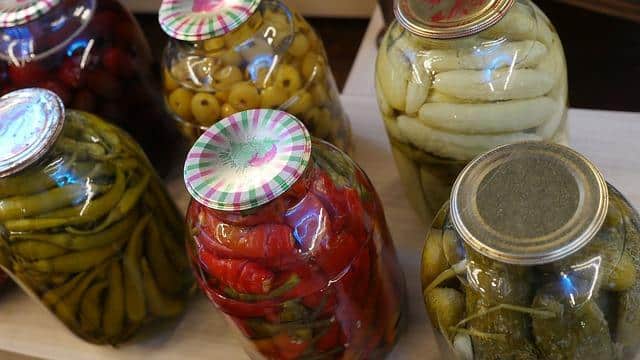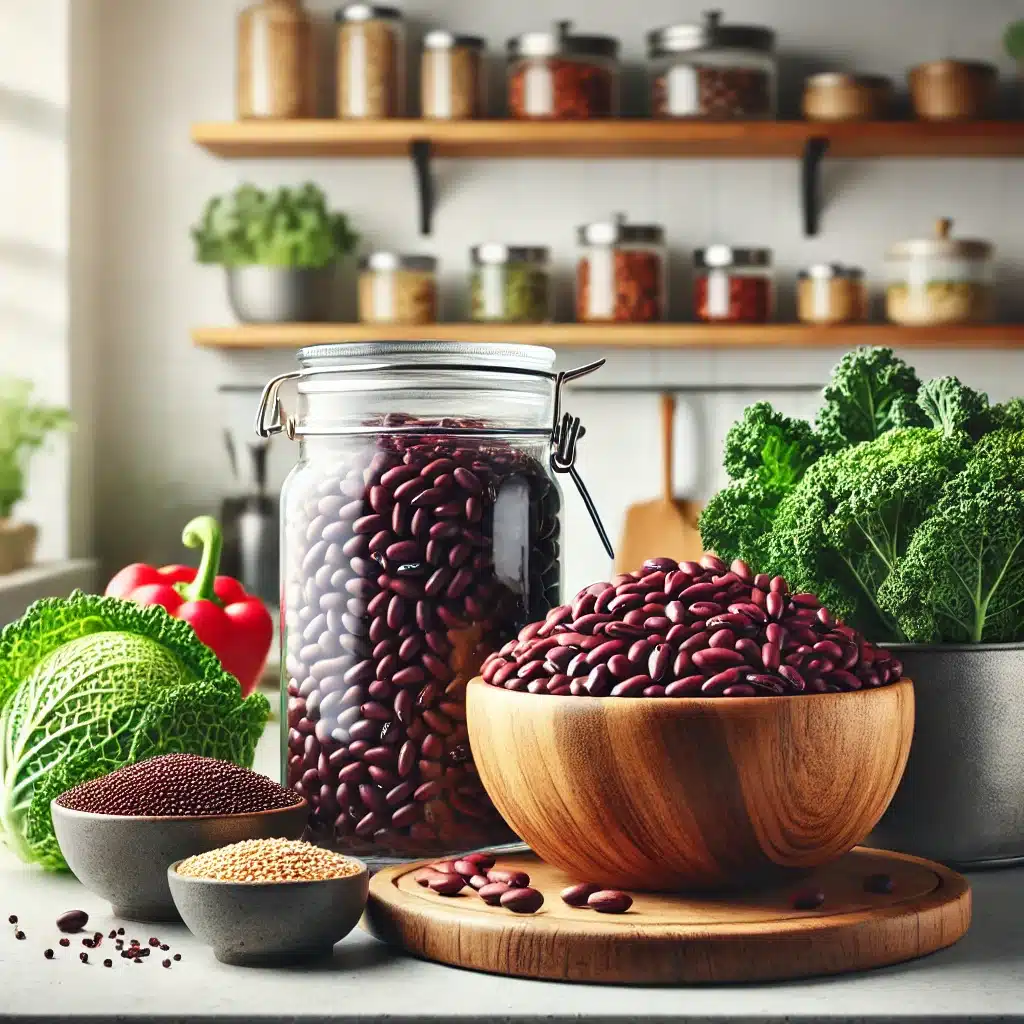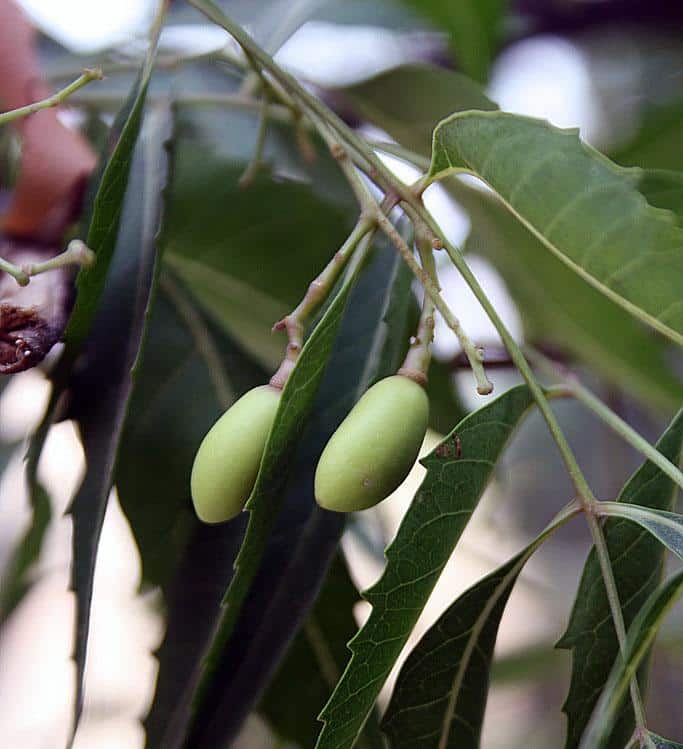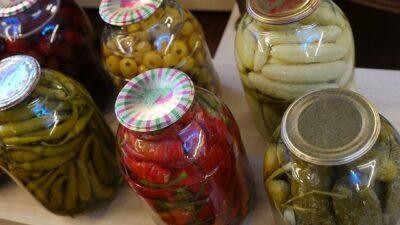
Canning is practiced by grandmothers and mothers all over America. The sterilization of high heat and pressurization has made it the safe and preferred preservation of Americans for generations, but some people aren’t interested in spending hours over a stove for cupboards precariously stacked with jars of heat-compromised nutrients. And we don’t have to! We can use our garden through the winter months and it won’t require us to buy a fancy pan or convert our crawl space into an apple butter pantry.
1. Fermentation
Fermentation is an age-old practice that involves little more than salt, water and a dark corner. Everything from soy sauce and sauerkraut to kimchi and tofu is thanks to a nice long probiotic bath. It’s so simple it seems too good to be true, but there’s a reason for its popularity across the world.
It all starts with a community of hungry microorganisms. They feed off of sugars and, in turn, release carbon dioxide, acids and alcohols which actually act to preserve our foods. So our veggies gets a new lease on life, plus a healthy dose of microflora and a punch of complex flavor. In all, fermentation offers a tasty jar of probiotic benefits that can be used to make everything from sauerkraut to medicinal wine and probiotic lemonade.
Get to know the basics of fermentation, then find yourself a crock pot or a good glass jar to give it a go. If you live in the right growing zone, you can put off this kitchen project until late fall, when cold-loving crops like cabbage will be at their peak.
2. Vinegar
Acetic acid, or vinegar, is itself a product of fermentation whereby microorganisms turn sugar into alcohol and then acid. Thanks to this acidic nature, vinegar provides an environment that has food spoilers turning on their heels. Garden veggies can be kept for months, and the process can be completed in a matter of minutes. If you’re a busy gardener, then this is the option for you.
Make ‘Off-The-Grid’ Super Foods Just Like Grandma Made!
We generally think of condiments like pickles and relish when we think of pickled foods, but vinegar offers far more versatility. There’s a number of pickle-icious fruits and vegetables, and you can even preserve herbs with vinegar. Spices are also a welcome addition that will boost flavors while imparting their health and antiseptic properties. Whatever route you choose to go, you’ve got a tangy jar of preserved goodness that will keep bacteria at bay.
3. Dehydration
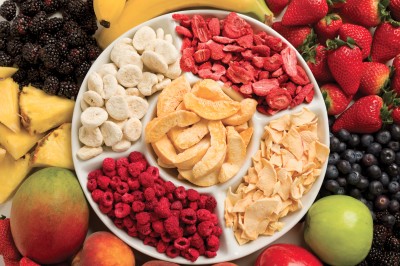
Dehydrating is my personal favorite when it comes to preservation. Dried foods are lightweight and compact, so they take minimal storage space, keep for months, and they’re highly mobile. The drying process maintains the structure of your fruits and veggies so they can easily be rehydrated and put to work, but their dried form gives them an explosive concentration of flavor that taste buds love.
Dehydration comes with another huge benefit, and that’s convenience. You can make gallon jars of dried soups, instant mashed potatoes, and even sauces that will be ready with just a cup of hot water. And you can always appease the kid in all of us with fun fruit leathers, salty veggie chips or even pies and ketchup.
Could Famine And Hunger Come To America?
Electrical dehydrators are a worthy investment because they work whether there’s rain or shine, but this convenience does come along with a whirring fan and a bump in the electrical bill. If you live in a location with sunny days ahead, then dehydrate in true off-grid style with a solar dehydrator. You can make your own with our simple DIY project so the sun can handle the energy bill.
4. Root cellar
Whether you have a full root cellar, or just a cool, dry space in your home, you should be thinking storage. Root crops like carrots and onions thrive in the dark conditions of soil, many even surviving through winter, so they’re easily brought indoors. It can take some trial and error to perfect the balance between moisture and temperature, but you’ll have many pounds of crunchy veggies without any extra fridge space.
Some crops will require curing to store long-term, as is the case with potatoes, but the storing process is simple and basic. When storing foods, you’ll want to clean them simply by shaking them (no washing!). Vegetables can then be stored in plastic tubs, baskets, buckets or root-storage bins, with carrots and beets being packed in slightly damp sand. From here you just need to maintain ventilation, temperature and humidity, and be sure to sift through bins for spoilers while you’re around.
Try it
Preservation can be done simply, and it won’t cost you stacks of mason jars or hours over a stovetop. Figure out which approach best accommodates your space, diet and cooking considerations, and give it a try.
Do you have tips, tricks or resources that other people should know about? Share your knowledge in the comments below:
Harness The Power Of Nature’s Most Remarkable Healer: Vinegar


